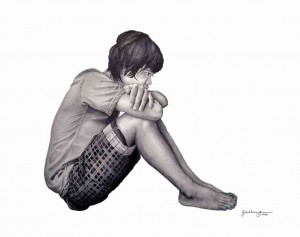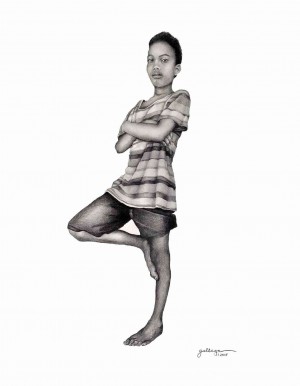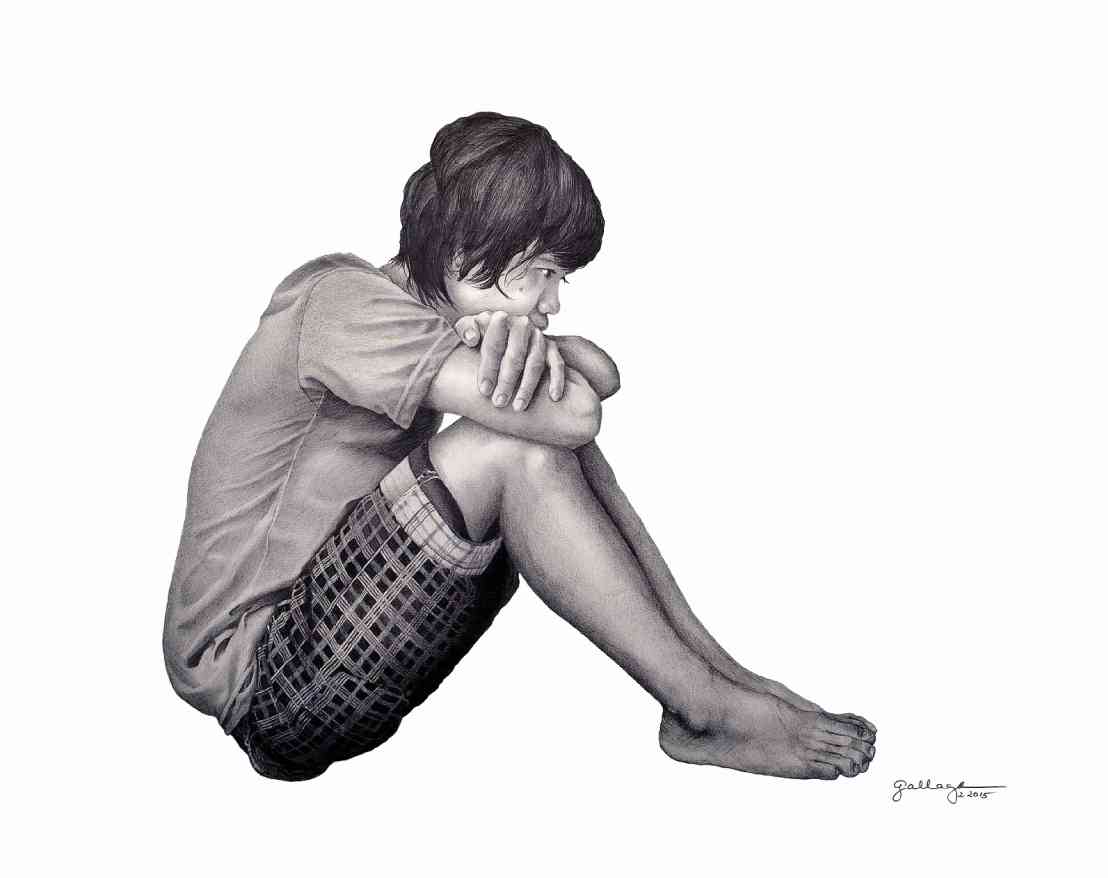
“The body does not lie.” Like a mantra, the late theater director Zenaida Amador drummed the statement on the minds of generations of stage actors who came under her wings.
Like a Geiger counter detecting the radiation of falsehood, she could sense the slightest nuance that the actor was not connected with the truth of the situation. By simply observing the subtlest gestures of the body language, she could tell if the actor was just “hamming” it up. When accosted, all the actor could do was just to sheepishly admit that his thought was really elsewhere.
Of course, the body does not lie, whether it’s applied to theater, to pain management or to the art of dissembling. Or, now, in the case of an art exhibition on view at a gallery that by sheer happenstance was named after the passion for truth. It is called Art Verité Gallery (verité, as you may well know, is French for “truth,” as in cinema verité, a film characterized by a subject or actions that have the appearance of real life.)
The art show is titled “Gray Matters,” and, like Amador, the artist just happens to be a director by the name of Peque Gallaga, whom National Artist Bienvenido Lumbera described as “the compleat cinema artist,” being a director, actor, screenplaywright, production designer, and mentor of budding directors.
Gallaga is the director of the films “Oro Plata Mata,” “Scorpio Nights” and “Virgin Forest.” Intoned Lumbera: “In the twilight of mainstream filmmaking, Gallaga’s roles in the industry must be engraved in history.”
It seems Gallaga is not yet ready for any engravement, a word that sounds perilously close to sending the honored person to his tombstone. For here is yet another life-enhancing facet of Gallaga’s brand of artistry: a solo exhibition of his own artworks.
Pleasant surprise
To be sure, Gallaga’s entry into the art scene will pleasantly surprise the public, despite the fact that it has already welcomed the art exhibitions of other entertainment luminaries such as Kuh Ledesma, Heart Evangelista, Ian Veneracion, and most recently, “Direk” Louie Ignacio.
The gray in Gallaga’s title adverts to his chosen medium, which is HB graphite pencil. The H stands for “hardness,” while B stands for “blackness.” The choice of medium may puzzle the audience more accustomed to materials such as oil, acrylic, and watercolor. But no matter: graphite ideally serves his purpose, since his main is the delineation of the human figure, and graphite pencil or charcoal is its primary instrument. Though aided by a computer, Gallaga himself was hands-on in the photography of his subjects, and more importantly, in the limning of the entire physiognomy of the figures from a sheerly mechanical and prosaic reproduction of an image to, finally, a palpably felt artwork. The images are the end result of an imperceptible blending and crosshatching of tones which transform an otherwise flat surface into a volumetric illusion of reality. One might say, that these are works hewn from infinite patience.

True to his calling, Gallaga “cast” his own subjects, and like the Italian neo-realist directors such as Federico Fellini, Roberto Rossellini and Vittorio de Sica, he opted for ordinary people, mainly in their youth, from his native Negros.
Rite of passage
A few family members were enjoined to serve as models and to pose for the artist-director. Entering “public life,” as it were, and gamely stepping into the limelight, they have shown, through this rite of passage, that the Gallaga DNA is enmeshed in their very tissue.
At the outset, these figures were not conceived essentially as portraits, but rather as instruments or vehicles for the projection of a specific moment in time which recorded and documented an unspecified mood or emotion.
Whether singly or in pairs, they behaved as they were circumscribed by the thoughts then running through their minds, thus the introspection that unconsciously impels them to assume their poses.
They stare at the viewer (at that moment, the photographer) or they avert their glances, a refusal to participate in what they perceive as a charade of the artistic enterprise. Or they may choose to ignore the camera with a total lack of self-consciousness.
Other poses are admittedly improvised as in a theatrical or choreographic exercise, a calculated move to defuse their restlessness. Still others exude an unremittingly detached air, their disquiet masked by incongruous behavior, their spirit at a remove, while a couple of poses are unabashedly exhibitionistic. All these are manifested by the awkward contortions of arms and legs in the wrapping and embracing of their torsos. The gallery viewer finds himself between the space that divides the observer and the observed. It is this continuity of experience that Gallaga may have peremptorily allowed us to discover.
Floating in pure open space of the white paper, isolated from any sense of the outdoor or domestic containment, the figures are unmoored from the strictures of narrative that obtrusively arise in our imagination. Thus we wonder: is that child a rape victim? What emotional crisis is that young man going through? Or, alas, other more sordid thoughts. The viewer may regard them as halation of thoughts that spread out from the proper boundaries of their photographic image. It is a fantasy trap which Gallaga must have shrewdly laid for us.
Gallaga’s “gray matter” is used in the informal sense, meaning intelligence, and in this aesthetic exercise where the human body, unable to lie, manifests itself as lucidly as the emotions that emanate from its every pore, and as expressively as the light that glints from the subject’s eyes, the artist invites us to glean as many shades of meanings in the wealth of grays that he has enveloped his images.











































